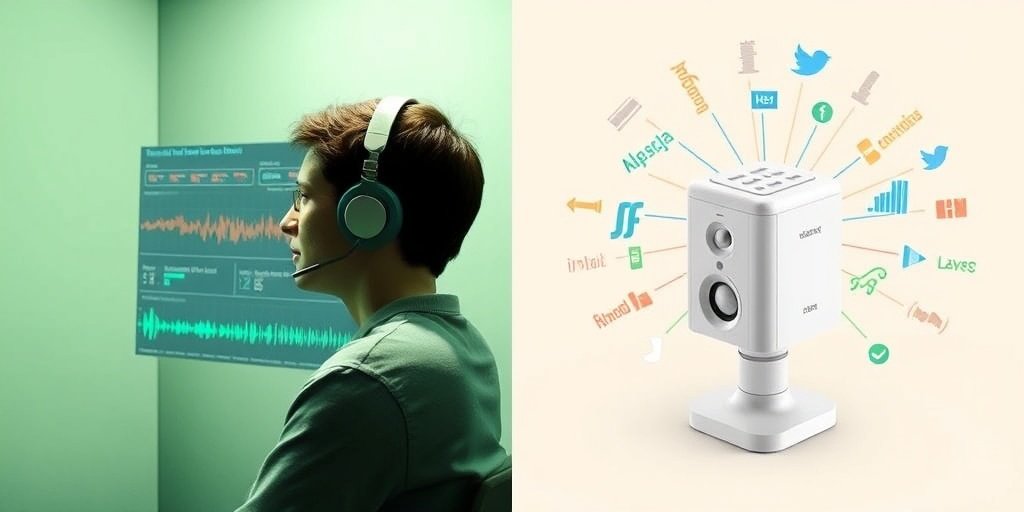⚡ Quick Summary
This study presents a groundbreaking approach to developing speech-in-noise hearing tests using machine learning. The automated system, named “Aladdin,” demonstrated 84% specificity and 100% sensitivity, making it a promising tool for enhancing hearing loss diagnostics globally.
🔍 Key Details
- 📊 Technology Used: Machine learning, text-to-speech, and automatic speech recognition (ASR)
- 🧩 Test Developed: Digits-in-noise (DIN) hearing tests
- 🌍 Languages: Dutch and English
- 🏆 Performance Metrics: Aladdin tests: 84% specificity, 100% sensitivity
- 📅 Publication: Sci Rep, 2025
🔑 Key Takeaways
- 🤖 Aladdin automates the creation of hearing tests, reducing development time and costs.
- 🌐 Global Accessibility: This method could improve access to hearing tests in low and middle-income countries.
- 📈 Performance: Aladdin tests showed comparable results to traditional DIN tests.
- 💡 Universal Guidelines: Aladdin provides a framework for developing DIN tests across different languages.
- 🔍 Research Implications: This study highlights the potential of AI in enhancing hearing loss diagnostics.

📚 Background
Understanding speech in noisy environments is a significant challenge for individuals with hearing loss, impacting their daily communication and overall quality of life. Traditional speech-in-noise tests are crucial for diagnosing hearing loss but are often resource-intensive, limiting their availability, especially in low and middle-income countries. The need for more accessible testing methods has led to the exploration of innovative technologies, such as machine learning.
🗒️ Study
The study introduced the Aladdin system, which stands for “Automatic LAnguage-independent Development of the digits-in-noise test.” By utilizing text-to-speech and automatic speech recognition (ASR), the researchers aimed to automate the development of DIN tests. The study compared the performance of the newly developed Aladdin tests with traditional DIN tests in listeners with both normal hearing and hearing loss.
📈 Results
The results indicated that the Aladdin tests achieved an impressive 84% specificity and 100% sensitivity, closely mirroring the performance of traditional DIN tests, which recorded 87% specificity and 100% sensitivity. This suggests that the Aladdin system can effectively replicate the diagnostic capabilities of established methods while offering significant advantages in terms of development efficiency.
🌍 Impact and Implications
The implications of this study are profound. By automating the development of hearing tests, the Aladdin system could significantly enhance the accessibility of hearing loss diagnostics worldwide. This advancement not only addresses the logistical challenges faced in resource-limited settings but also provides a universal guideline for developing hearing tests across various languages. The potential for improved screening and treatment for hearing loss is a crucial step forward in public health.
🔮 Conclusion
The introduction of the Aladdin system marks a significant milestone in the field of audiology. By leveraging machine learning to automate the development of speech-in-noise tests, we can expect a more efficient and accessible approach to diagnosing hearing loss. This study opens the door for further research and innovation in hearing health, promising a brighter future for individuals affected by hearing impairments.
💬 Your comments
What are your thoughts on the use of AI in developing hearing tests? We would love to hear your insights! 💬 Leave your comments below or connect with us on social media:
Automatic development of speech-in-noise hearing tests using machine learning.
Abstract
Understanding speech in noisy environments is a primary challenge for individuals with hearing loss, affecting daily communication and quality of life. Traditional speech-in-noise tests are essential for screening and diagnosing hearing loss but are resource-intensive to develop, making them less accessible in low and middle-income countries. This study introduces an artificial intelligence-based approach to automate the development of these tests. By leveraging text-to-speech and automatic speech recognition (ASR) technologies, the cost, time, and resources required for high-quality speech-in-noise testing could be reduced. The procedure, named “Aladdin” (Automatic LAnguage-independent Development of the digits-in-noise test), creates digits-in-noise (DIN) hearing tests through synthetic speech material and uses ASR-based level corrections to perceptually equalize the digits. Traditional DIN tests were compared with newly developed Dutch and English Aladdin tests in listeners with normal hearing and hearing loss. Aladdin tests showed 84% specificity and 100% sensitivity, similar to the reference DIN tests (87% and 100%). Aladdin provides a universal guideline for developing DIN tests across languages, addressing the challenge of comparing test results across variants. Aladdin’s approach represents a significant advancement in test development and offers an efficient enhancement to global screening and treatment for hearing loss.
Author: [‘Polspoel S’, ‘Moore DR’, ‘Swanepoel W’, ‘Kramer SE’, ‘Smits C’]
Journal: Sci Rep
Citation: Polspoel S, et al. Automatic development of speech-in-noise hearing tests using machine learning. Automatic development of speech-in-noise hearing tests using machine learning. 2025; 15:12878. doi: 10.1038/s41598-025-96312-z